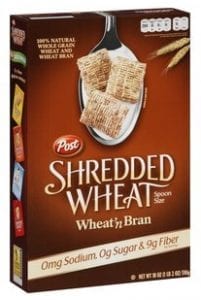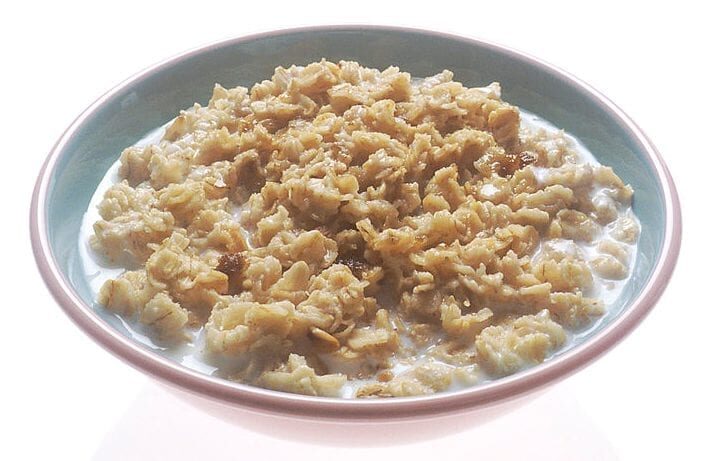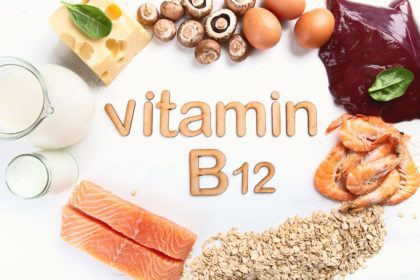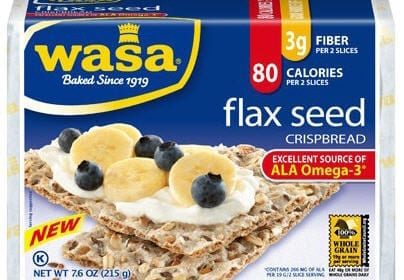UDDATE: For good health, aim for getting in 40 gm of fiber every day — but all fibers are not alike. If you’re a diabetic, cardiac patient or at risk for heart disease, it’s a good idea to know the difference.
Dietary fibers are found naturally in plants. They’re the parts that don’t break down in your stomach and pass through your system pretty much intact. Fiber is separated into two main types: “soluble” (or high-viscosity) and “insoluble” (or low-viscosity fibers). They’re both important, but they’re different in how they react with water and their effect on your body.
Soluble Fiber (a.k.a. High-Viscosity)
- Dissolves in water and forms a viscous gel in the intestines, which slows down digestion.
- Helps lower LDL or “bad” cholesterol.*
- Slows the emptying of food through the G.I. (gastrointestinal) tract, so it helps control blood sugar and diabetes.
- Makes you feel full longer, which helps control body weight.
- May reduce blood pressure and inflammation.
*LDL cholesterol is needed to produce hormones and provide structure to cell membranes, but because excesses can accumulate in the blood vessels and promote atherosclerosis, it’s been branded as the “bad” cholesterol.
Did You Know…
Soluble fiber acts like a “cholesterol sponge“. It soaks up cholesterol-laden bile salts in your intestine and eliminates them with other waste. To produce more bile acids (the compounds needed to transport and absorb fat and fat-soluble vitamins), your liver must use the LDL cholesterol in your bloodstream. That means there’s less to collect and harden on the walls of your arteries!
Soluble Fiber Sources – Oats, beans, and certain fruits/vegetables. Look for:
- Whole-grain oats, oatmeal, oat bran
- Barley, rye, chia
- Beans, dried peas, lentils
- Apples, pears
- Blueberries, strawberries
- Oranges, pears, prunes, ripe bananas
- Brussels sprouts, carrots, celery
- Flaxseeds, ground (not whole)
- Nuts
 Insoluble Fiber (a.k.a. Low-Viscosity Fiber)
Insoluble Fiber (a.k.a. Low-Viscosity Fiber)
- Does not dissolve in water.
- Absorbs water as it travels through your digestive tract which eases elimination.
- Helps prevent constipation by adding bulk to your diet.
- Helps maintain bowel health by speeding up passage of food and waste through your gut.
- It acts like “Nature’s Broom”.
NOTE: Since some these fibers absorb water, be sure to drink more fluids as you increase your fiber intake.
Insoluble Fiber Sources – Whole grains, except oats, and most fruits/vegetables, especially the skins, stalks, and seeds (also known as “roughage”). Look for:
- Whole-grain wheat
- Whole-grains, except oats
- Wheat bran, corn bran, popcorn
- Barley, bulgur, couscous
- Nuts/Seeds
- Broccoli, cabbage, cauliflower
- Carrots, celery, cucumbers
- Dark leafy vegetables
- Grapes, raisins
- Green beans, onions, tomatoes
- Skins of potatoes and other root vegetables, such as sweet potatoes
![]() Karen’s Fit Tip: Many foods have both soluble AND insoluble fibers with some having predominantly more of one than the other. Eat a high-fiber diet rich in a variety of fruits, vegetables, whole grains, legumes, nuts, and seeds to get the many health benefits from both soluble and insoluble fibers.
Karen’s Fit Tip: Many foods have both soluble AND insoluble fibers with some having predominantly more of one than the other. Eat a high-fiber diet rich in a variety of fruits, vegetables, whole grains, legumes, nuts, and seeds to get the many health benefits from both soluble and insoluble fibers.





